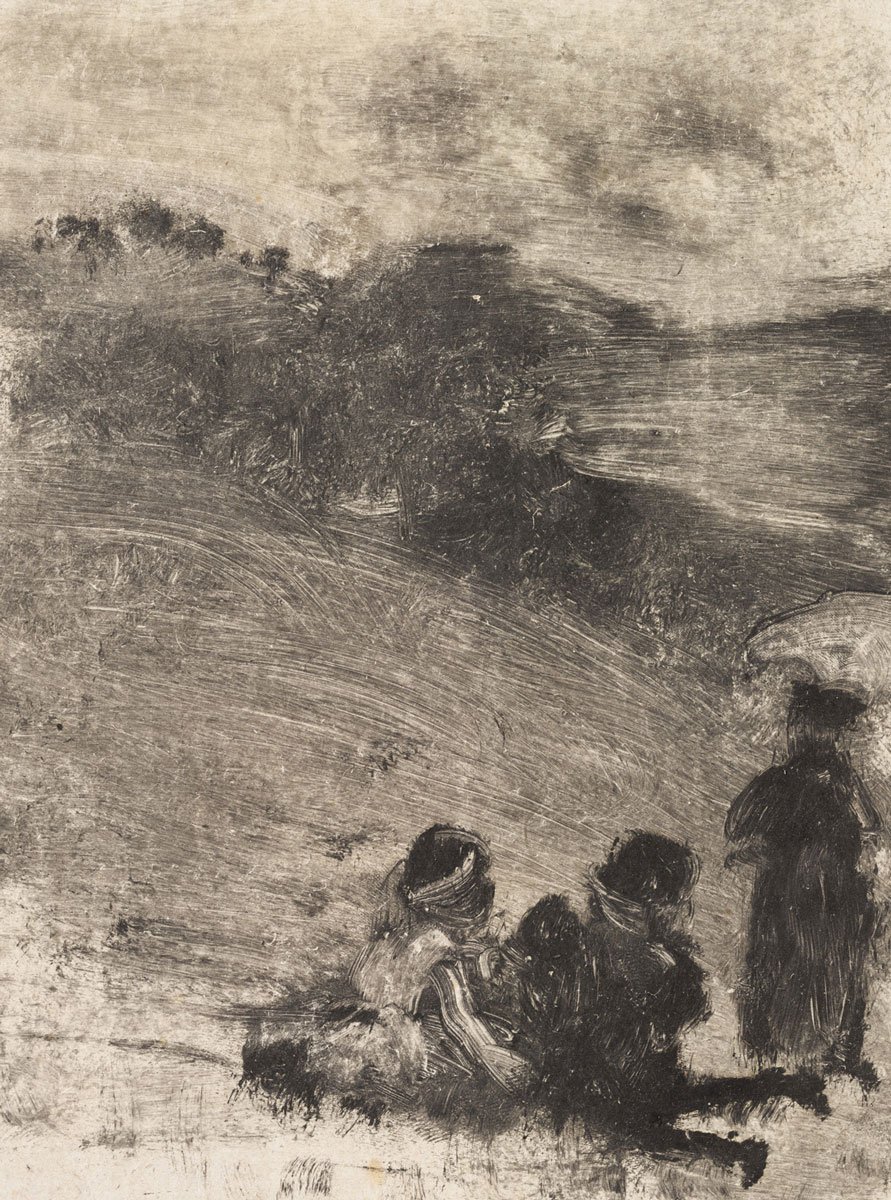MONOTYPES
 Edgar Degas, Rest in the Fields (Repos dans les champs), c. 1877–80, monotype on off-white wove paper. The Clark, 1962.41
Edgar Degas, Rest in the Fields (Repos dans les champs), c. 1877–80, monotype on off-white wove paper. The Clark, 1962.41In the summer of 1876, Edgar Degas began experimenting with monotype printing, a process he would continue to work with through the early 1890s. He would take an unetched metal plate and manipulate either black printer’s ink or, later, oil paint, on its surface—using rags, sponges, tools, or even his own fingertips—to create an image. Placing a dampened sheet of paper over the inked plate and running them through a press caused the ink to transfer to the paper, resulting in a monotype—so called because only one print was typically made.
Friend and fellow artist Marcellin Desboutin described Degas’s fervor for monotype, “Degas is no longer a friend, a man, an artist! He is a zinc or copper plate blackened with printer’s ink, and plate and man are flattened together by his printing press, whose mechanism has swallowed him completely.”
